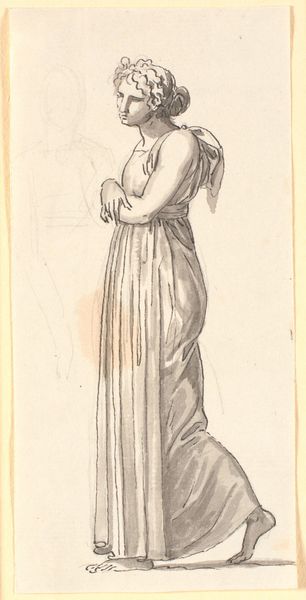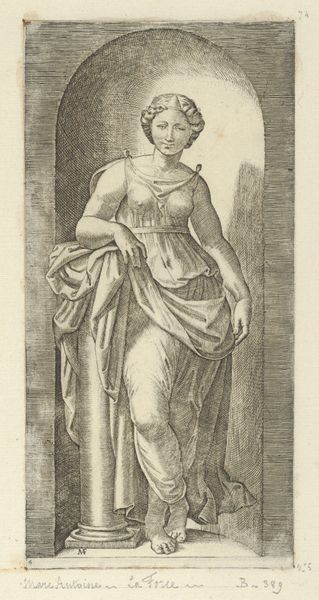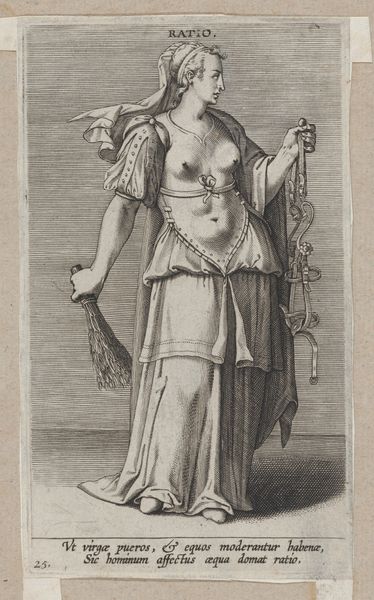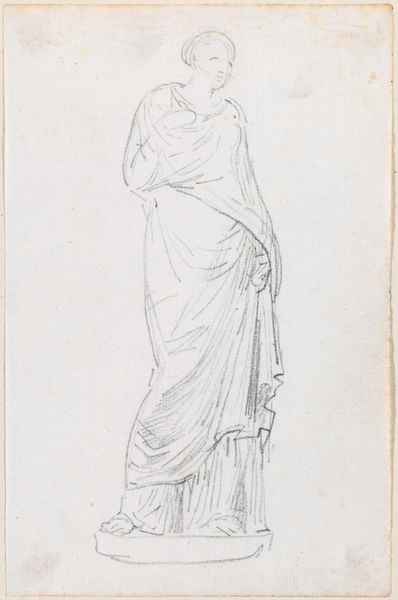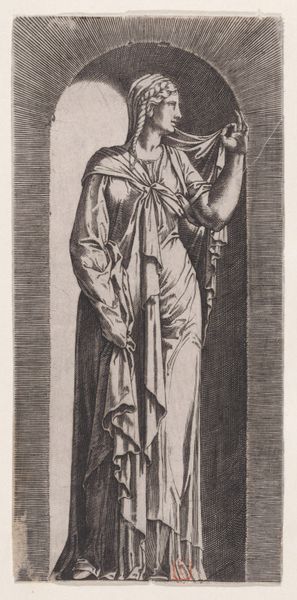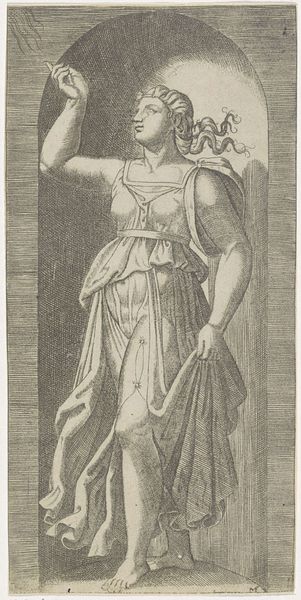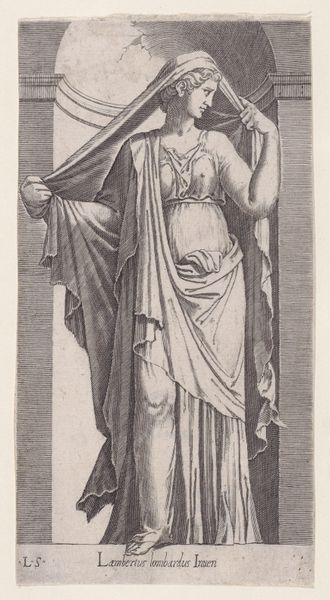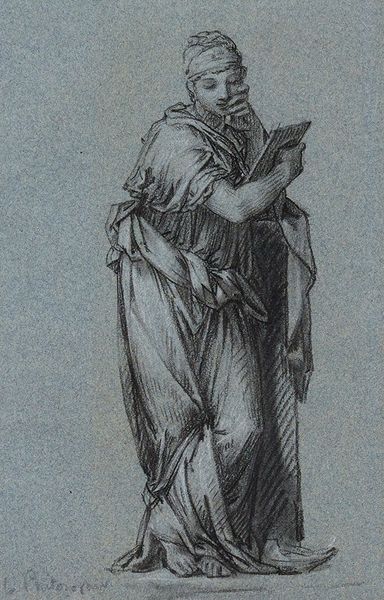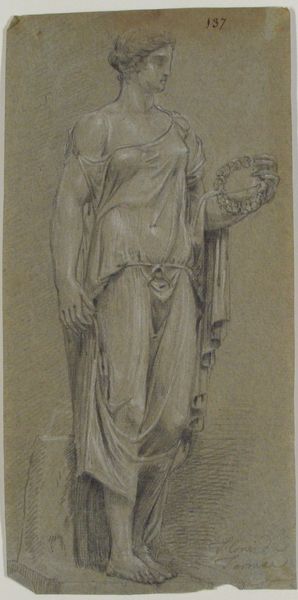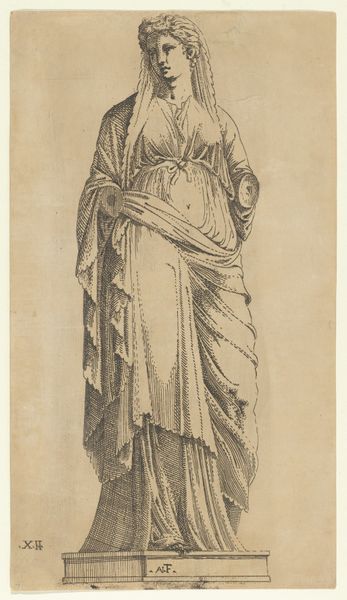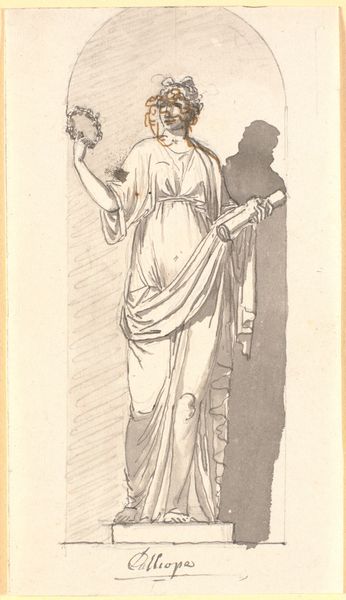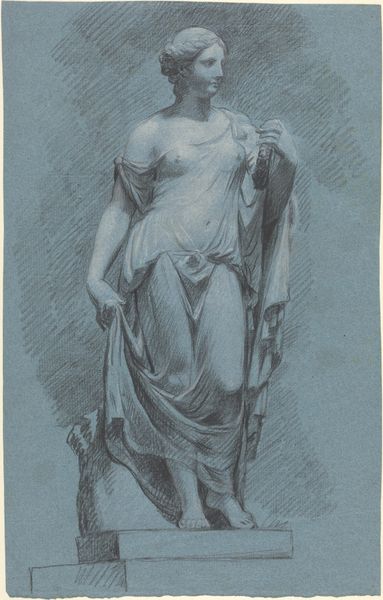
drawing
#
pencil drawn
#
drawing
#
light pencil work
#
mechanical pen drawing
#
pen illustration
#
pen sketch
#
pencil sketch
#
old engraving style
#
pen-ink sketch
#
pen work
#
portrait drawing
Dimensions: 475 mm (height) x 263 mm (width) (bladmaal)
Editor: We're looking at "Medea with a Sword in her Hand" by Christen Købke, created between 1838 and 1841. It’s a pencil drawing, and there’s almost a haunting quality to Medea's expression, despite the softness of the medium. What are your initial thoughts when you see this image? Curator: The arresting image makes me consider the sociopolitical backdrop in which it was created. Köbke's choice to depict Medea, a figure of immense rage and maternal grief, raises questions about the accepted roles of women at the time. Remember, this drawing was made in the first half of the 19th century, a time of increasingly rigid social structures. Editor: That’s fascinating. So, by choosing Medea, was Købke subtly challenging those norms? Curator: Precisely. Medea was often depicted in art and theatre as a figure of either savage revenge or tragic loss, but the real story hinges on societal norms – her exile and abandonment. The fact that Köbke places her, sword in hand, front and centre, invites viewers to perhaps consider Medea’s perspective on the politics of her day. He prompts a reflection on what drives a woman to infanticide and also, I wonder, who and how would it be displayed to the public? What effect would it have in this setting? Editor: I never really thought about it that way. It adds so many layers to my understanding of the piece. Curator: Exactly! By thinking about the artwork's potential reception during Köbke's time, we can appreciate its power. It isn’t just about the artistry of the drawing itself, but the socio-cultural discourse that the artwork engaged with, and continues to spark. Editor: It really shows how art is always connected to something bigger. Thank you so much! Curator: My pleasure! Hopefully, it will make people think about art as connected to much larger issues.
Comments
No comments
Be the first to comment and join the conversation on the ultimate creative platform.
